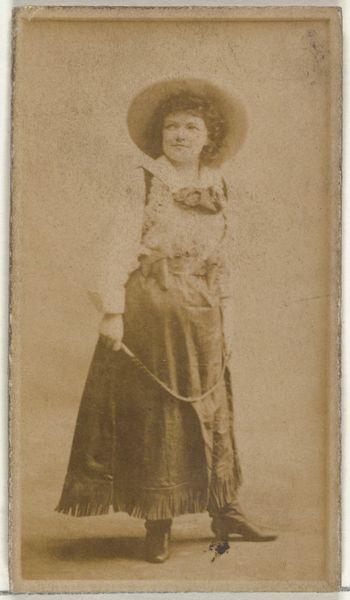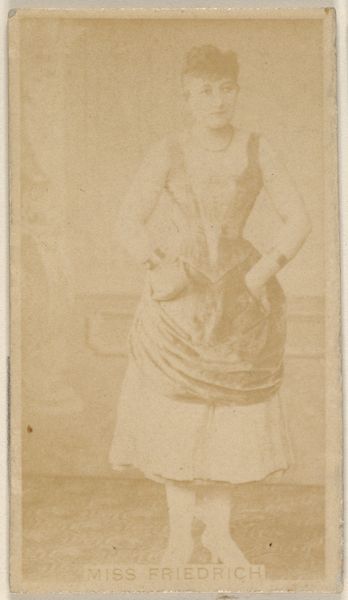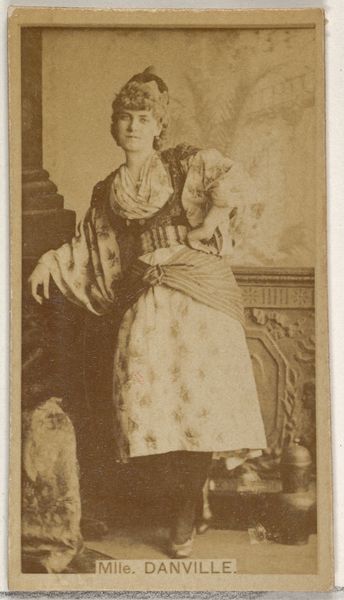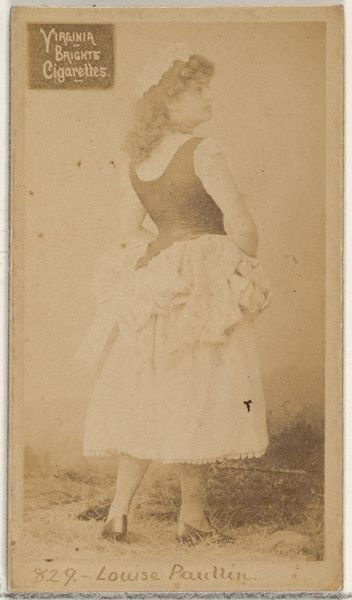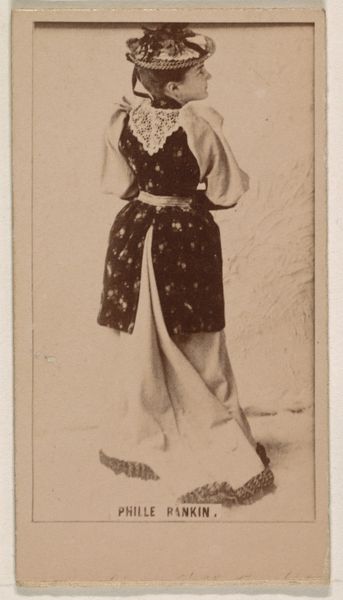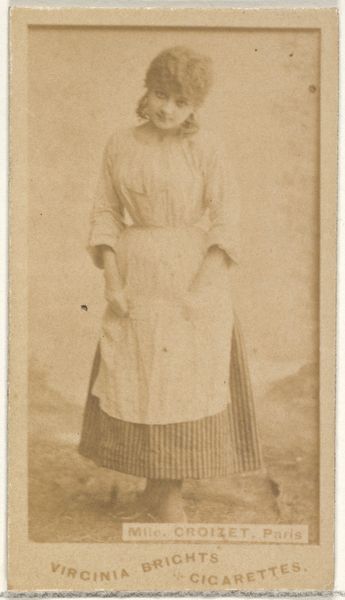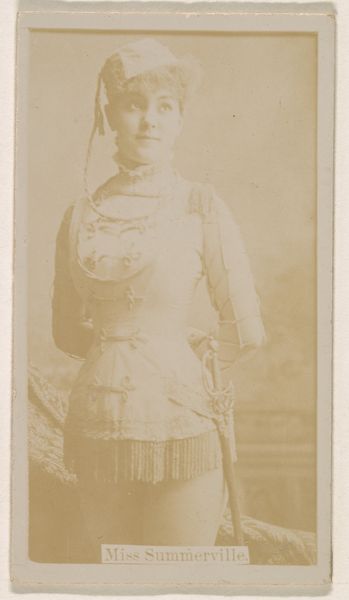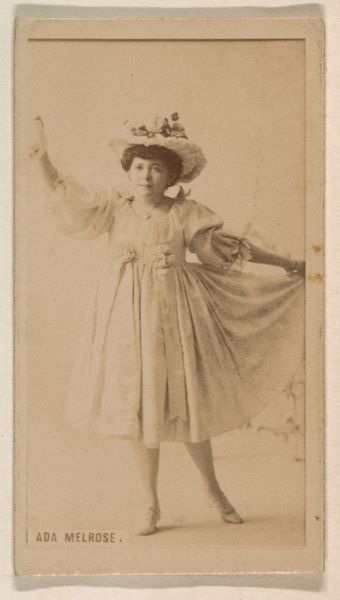
Alice Tack, from the Actresses series (N245) issued by Kinney Brothers to promote Sweet Caporal Cigarettes 1890
0:00
0:00
print, photography
#
portrait
#
still-life-photography
#
pictorialism
# print
#
charcoal drawing
#
photography
Dimensions: Sheet: 2 1/2 × 1 7/16 in. (6.4 × 3.7 cm)
Copyright: Public Domain
Curator: Looking at this 1890 photograph from the Metropolitan Museum of Art, “Alice Tack, from the Actresses series,” printed by Kinney Brothers to promote Sweet Caporal Cigarettes, I find it evokes a sense of both serenity and constrained femininity. Editor: The overwhelming sepia tone lends to its feeling of aged delicacy. However, the rigid pose of Alice Tack seems contradictory. The promotional intention here speaks of idealized female images being weaponized for commercial goals. Curator: That tonal quality absolutely underscores what some term ‘pictorialism’ within early photography, attempting to emulate artistic effects of paintings with soft focus and dreamy light, giving this "actress series" image an ethereal, almost mythic quality for its time. Editor: Yes, the pictorialism definitely romanticizes and arguably neutralizes a potentially controversial subject: actresses. However, understanding who exactly they were trying to appeal to at the turn of the century helps contextualize these strategic choices of pose and lighting in service of specific ideological aims. Curator: Given the subject and the era, the symbolic import of her dress seems deliberate: it feels like a coded system, offering the viewer insight into ideas about turn of the century standards of stage stardom as promoted and constructed by industrial culture. Editor: Precisely! This kind of visual presentation contributes to how the collective imagination would start representing "womanhood" within capitalist frameworks. I wonder how Tack herself negotiated her public representation and the reality of her daily work. Curator: The photograph is undoubtedly posed and polished, yet in looking closer one senses an almost haunting echo from a long gone era where performers carried particular cultural symbolism--perhaps embodying an imagined world as they stood under bright lights. Editor: Ultimately, images like this helped create enduring yet complicated historical imprints by using human subjects to propel commodification into modern culture. Curator: A moment captured, yet also fabricated, echoing through the decades to this very moment of observation. Editor: Indeed; we both see, I think, how complex a single still image can become once it sets off such rippling effects in history.
Comments
No comments
Be the first to comment and join the conversation on the ultimate creative platform.

